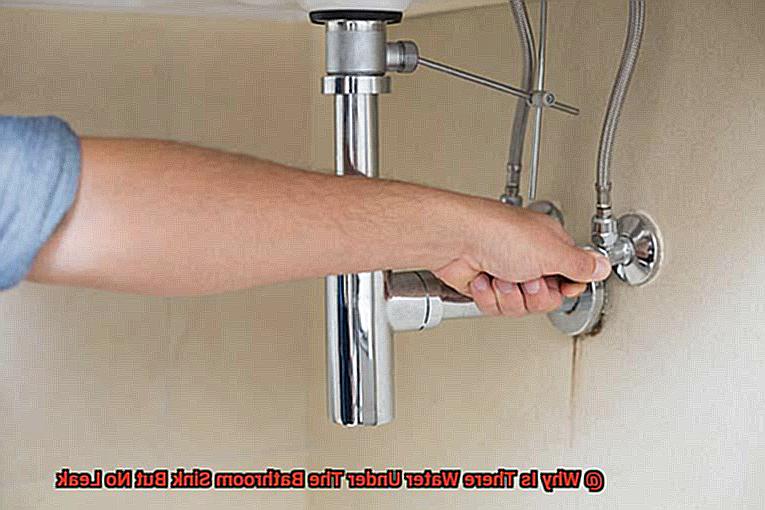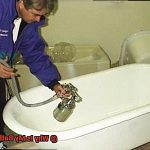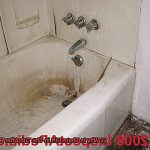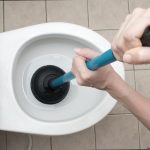Your initial reaction may be to panic and assume that there’s a leak, but upon closer inspection, you realize that there’s no visible source of the water. This scenario might sound like something straight out of a horror movie, but it’s actually quite common for homeowners.
The good news is that there’s usually a simple explanation for why there’s water under the bathroom sink but no leak. More often than not, the culprit is a clogged drain.
Over time, hair, soap scum, and other debris can accumulate in your pipes and create a blockage that prevents water from draining properly. When this happens, the water can back up and eventually overflow, resulting in a pool of water under your sink.
While this problem may not be as serious as a leak, it’s still important to address it promptly to prevent any further damage to your plumbing system. In this blog post, we’ll dive deeper into the common causes of this issue and provide you with some tips on how to diagnose and fix it.
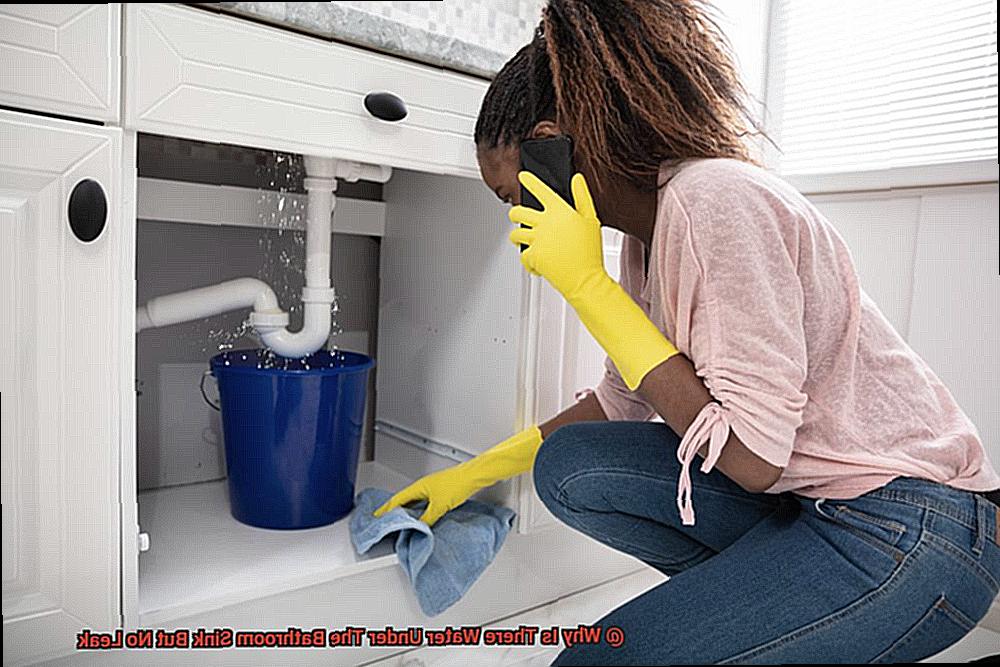
We’ve got all the information you need about why there’s water under the bathroom sink but no leak.
Contents
- 1 What is a Leak?
- 2 Causes of Water Under the Bathroom Sink Without Visible Leaks
- 3 Condensation as a Cause of Water Under the Bathroom Sink
- 4 Loose or Damaged Drainpipe as a Cause of Water Under the Bathroom Sink
- 5 Faulty Seals Around the Faucet or Sink as a Cause of Water Under the Bathroom Sink
- 6 Potential Damage Caused by Unaddressed Water Under the Bathroom Sink
- 7 Conclusion
What is a Leak?
To put it simply, a leak is any hole or crack in a plumbing fixture that allows water to escape.
Whether it’s a pipe, faucet or any other fixture, leaks can be detrimental if left unaddressed. They often produce dripping sounds and visible water stains on walls or ceilings.
But what if you find water under your bathroom sink despite no visible leaks? This can be perplexing for homeowners, but it’s crucial to keep in mind that not all leaks are visible to the naked eye.
Even small undetected leaks can cause significant damage over time. There are various potential reasons for water accumulation under your bathroom sink without visible leaks.
For instance, condensation forming on cold pipes can lead to small amounts of water pooling under the sink. A loose fitting or cracked drainpipe can also allow water to seep out slowly without being noticeable.
Alternatively, water from another source nearby may be pooling under the sink. Regardless of the cause, it’s vital to identify the source of the problem and address it promptly to prevent further damage.
A professional plumber can come in handy in diagnosing and fixing any plumbing issues causing the problem. In conclusion, while leaks are often visible and easy to spot, not all leaks are created equal.
The key is to act fast and call in a professional plumber to help diagnose and fix any issues before they turn into costly disasters.
Causes of Water Under the Bathroom Sink Without Visible Leaks
Panic sets in as you check the pipes, but there’s no visible sign of leaks. How could this have happened?
Don’t worry, we’re here to help you identify the potential causes of water under the bathroom sink without visible leaks. One of the most common culprits of water under the bathroom sink is condensation.
Warm, moist air can come into contact with cold surfaces like pipes or the underside of the sink, causing moisture to form. This moisture can accumulate over time and create a pool of water under the sink.
Another potential cause is loose or worn-out connections. As pipes and fittings age, they can become loose or damaged, causing water to leak out.
Even a small amount of water can accumulate over time and create a pool under the sink. Problems with the drain can also lead to water under the bathroom sink.
If the drain is clogged or partially blocked, water may not be able to flow through properly, causing it to back up and overflow. Last but not least, faulty seals can also lead to water under the bathroom sink without visible leaks.
Seals around faucets or other plumbing fixtures can deteriorate over time, allowing water to seep out and accumulate under the sink. If you notice water under your bathroom sink without any visible leaks, start by checking for condensation or loose connections.
If you can’t find an obvious cause, it’s best to contact a professional plumber for help identifying and fixing the problem before it turns into a costly disaster. Don’t underestimate even tiny undetected leaks as they can cause significant damage over time.
Condensation as a Cause of Water Under the Bathroom Sink
There may be a simple explanation: condensation.
Condensation can occur when humid air interacts with a cold surface, causing moisture to form. In the case of bathroom sinks, the frigid pipes and metal fixtures can act as a breeding ground for condensation.
This is particularly true in bathrooms without proper ventilation or in areas with high humidity levels. To prevent this pesky problem from recurring, it’s crucial to ensure proper ventilation in your bathroom.
This can be achieved by installing an exhaust fan or opening windows during and after showers to reduce humidity levels and prevent excess moisture from accumulating. Furthermore, insulation of pipes and fixtures can help maintain their temperature and prevent them from getting too cold, reducing the likelihood of condensation forming.
Dry the area thoroughly and attend to any potential damage that may have occurred.
Loose or Damaged Drainpipe as a Cause of Water Under the Bathroom Sink
This common problem can lead to moisture accumulation and even mold growth, which can be detrimental to your health. Improper installation, wear and tear, or shifting of plumbing fixtures are some of the common reasons why connections can loosen, allowing water to seep out slowly.
Corrosion, rust, or physical damage from objects hitting or striking the pipe can also cause damage to the drainpipe. To identify if a loose or damaged drainpipe is causing water under your sink, perform a simple inspection.
Look for visible signs of damage on the drainpipe, such as cracks or leaks. Additionally, check if connections are secure by tightening them with a wrench.
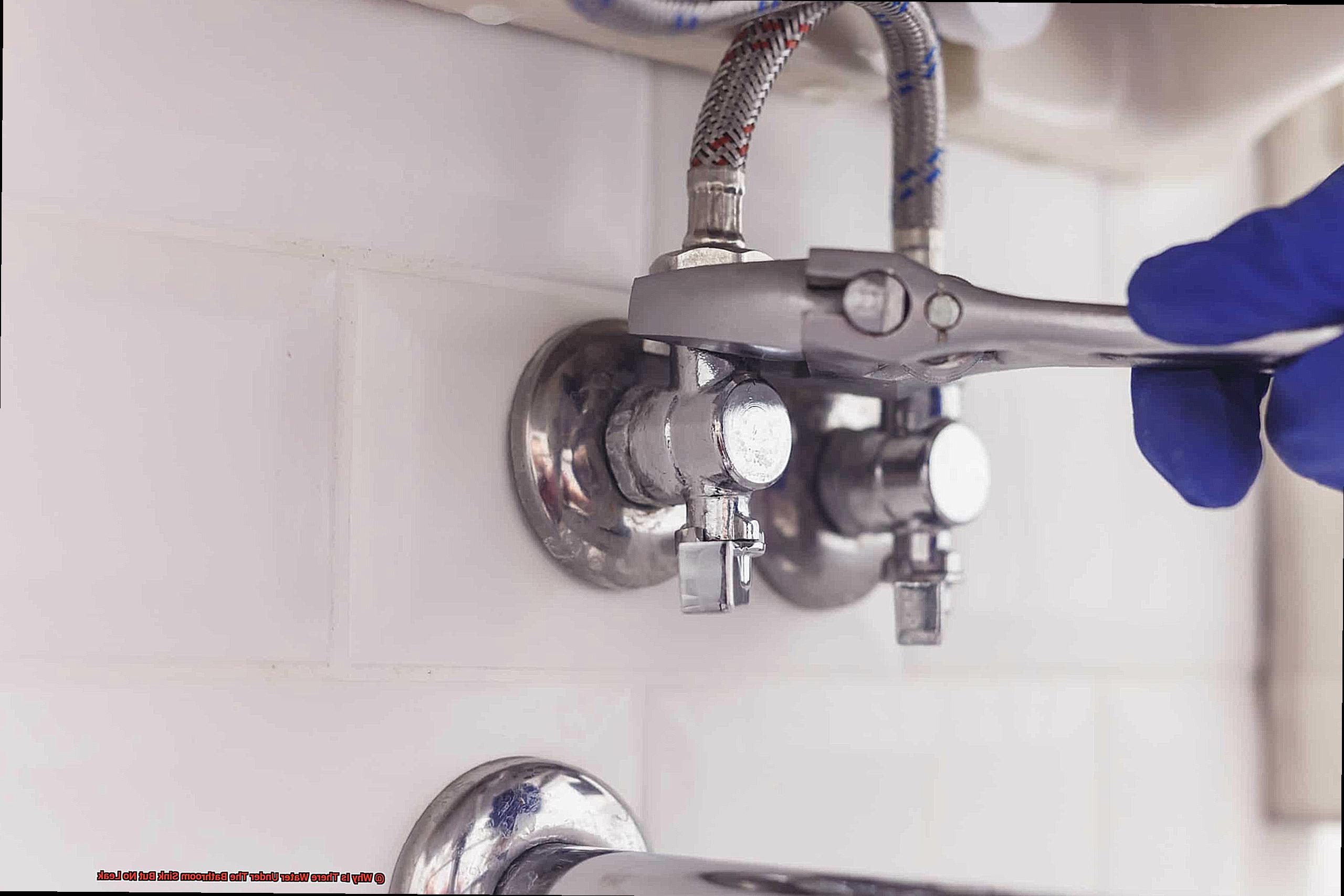
If you find any loose connections, tighten them immediately to prevent further leaks. However, if you detect a damaged drainpipe, seek professional plumbing help as soon as possible.
A plumber will assess the damage and recommend repair or replacement options depending on the severity of the damage. In some cases, a simple fix like a patch can be used to fix small cracks or holes in the pipe.
However, more severe cases may require replacing an entire section of the pipe. In conclusion, don’t ignore water under your bathroom sink without any visible leaks as it could be due to a loose or damaged drainpipe.
Regularly inspecting your plumbing fixtures and seeking professional assistance when necessary can help prevent further damage and costly repairs in the future.
Faulty Seals Around the Faucet or Sink as a Cause of Water Under the Bathroom Sink
The answer may lie in the seals around your faucet or sink.
These seals are often the unsuspecting culprits behind water damage underneath your bathroom sink. Think of your faucet and sink as your bathroom’s guardians against water damage.
However, just like any fortress, wear and tear can leave them vulnerable to invaders. This is precisely what happens when the seals around your faucet or sink become damaged or worn out.
Water can seep through these weak spots, collecting under the sink and potentially leading to hazardous mold growth and other health concerns. To check if faulty seals are causing water to collect under your bathroom sink, start by examining the area around the faucet and sink.
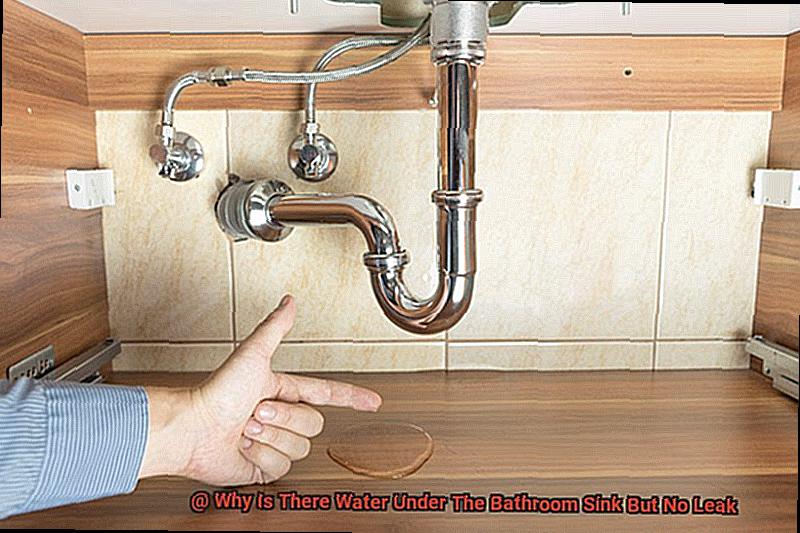
Look for any signs of wear or damage to the seals or gaskets. If you notice cracks or gaps in these seals, it’s time to replace them immediately.
Another way to detect faulty seals is by turning on the water and watching for any leaks. Even a small leak can be a sign of a problem with the seals around your faucet or sink.
Addressing any leaks promptly will help prevent further damage. To fix faulty seals, you may need to replace gaskets or other sealing materials around your faucet or sink.
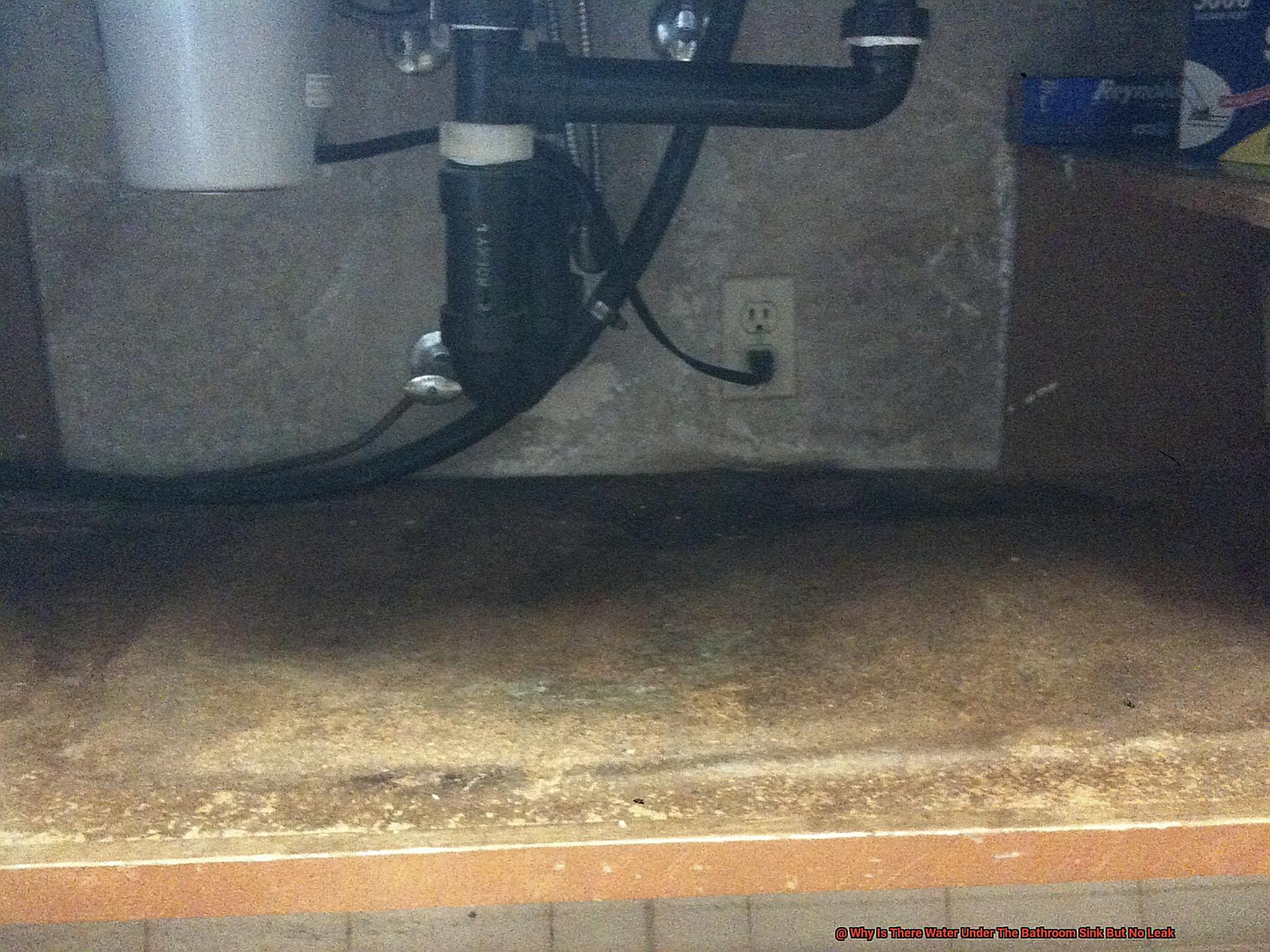
You can choose to hire a professional plumber or take on this project yourself if you have some plumbing experience. However, it’s crucial to use high-quality sealing materials and follow manufacturer instructions carefully for a proper seal.
Potential Damage Caused by Unaddressed Water Under the Bathroom Sink
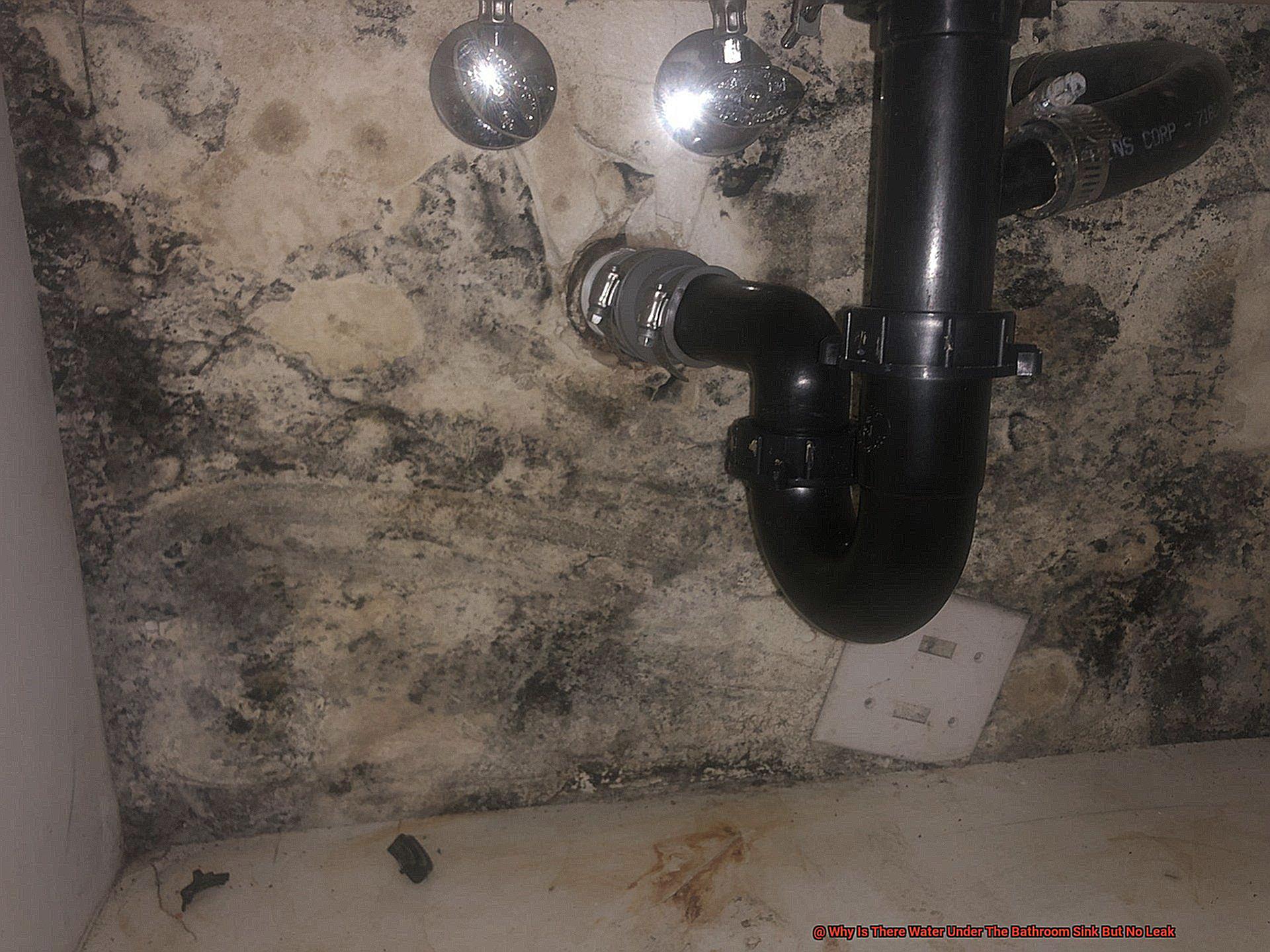
Just like any fortress, your sink and faucet can become vulnerable to invaders, and faulty seals around them can result in water collecting under your sink.
If left unaddressed, this can lead to hazardous mold growth, which can cause allergies and respiratory issues. Mold thrives in moist environments, and water under the sink can provide a perfect breeding ground.
Remember that mold doesn’t just look unsightly; it can be a serious health concern. To keep your bathroom safe and healthy, it’s crucial to promptly check for signs of wear or damage and address any leaks by replacing gaskets or other sealing materials with high-quality ones.
Always follow manufacturer instructions carefully to maintain a clean and functional bathroom fortress. Water under the bathroom sink can cause significant damage if left unaddressed.
One of the most common problems is damage to the sink cabinet. Over time, moisture can cause the wood to rot, leading to structural damage that may require costly repairs or even replacement of the entire cabinet.
Water can also damage any materials stored in the cabinet, such as cleaning supplies or extra towels. Moreover, water under the bathroom sink can lead to damage to the floor and walls surrounding the sink.
If the water seeps through the flooring or walls, it can weaken them and cause them to sag or warp. Not only is this type of damage unsightly, but it can also compromise the structural integrity of your home.
In conclusion, it is essential to address any water under the bathroom sink as soon as possible to prevent potential damages from occurring. Regularly checking for leaks and addressing them promptly can help avoid costly repairs and ensure your home remains safe and healthy for you and your family.
Remember that your bathroom fortress is only as strong as its weakest link, so don’t neglect the water under your bathroom sink.
xIiKsFHYUVs” >
Conclusion
In conclusion, discovering water under your bathroom sink but no visible leak can be a worrisome experience.
However, it’s important to note that not all leaks are immediately apparent. The most common culprit is a clogged drain, which can cause water to accumulate and eventually overflow, resulting in a pool of water beneath your sink.
Other potential causes include condensation forming on cold pipes, loose or damaged connections, faulty seals around the faucet or sink, and issues with the drain. No matter what the cause may be, it’s crucial to identify and address the problem promptly to prevent further damage to your plumbing system.
Neglecting the issue can lead to hazardous mold growth and structural damage that may require expensive repairs or even replacement of the entire cabinet. To avoid such scenarios, make sure to regularly check for leaks and address them as soon as possible.
If you’re unable to find an obvious source for the water under your bathroom sink without visible leaks, don’t hesitate to seek professional plumbing assistance.

